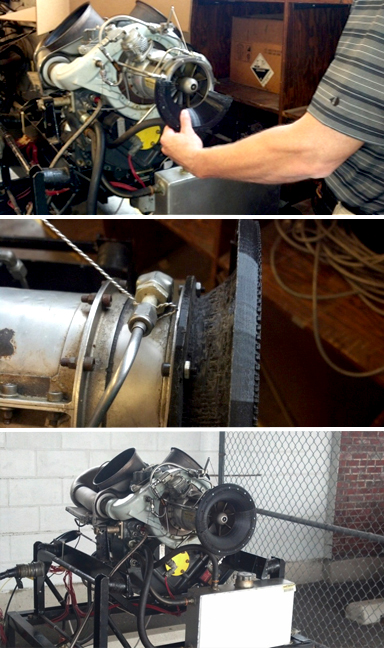Researchers successfully designed, 3-D printed and tested an inlet for an Allison 250 jet turbine engine over the summer. The test was a collaboration between Purdue’s Hangar of the Future research laboratory and the Department of Aviation Technology’s Aeronautical Engineering Technology (AET) Powerplant Lab.
 The test was conducted in the department’s outdoor engine test cell (see video below) and is one of a series of advanced aerospace manufacturing design projects being integrated into AET research and curriculum laboratories. The team utilized the Hangar of the Future lab’s 3D printer to produce the part.
The test was conducted in the department’s outdoor engine test cell (see video below) and is one of a series of advanced aerospace manufacturing design projects being integrated into AET research and curriculum laboratories. The team utilized the Hangar of the Future lab’s 3D printer to produce the part.
Amadou Anne, a graduate student in aviation and aerospace management, worked over the summer to model the engine's original inlet using aerospace-standard computer-aided design software. He worked with Timothy Ropp, clinical associate professor of aviation technology, and John Davis, clinical assistant professor of aviation technology.
“Having the chance to work with cutting-edge technology and participate with what’s new and innovative in aviation is very exciting," Anne said. "It is a great opportunity for us to be so familiar with these concepts and developments.”
The test run lasted several minutes as the team evaluated the part’s fit, hardware fastener security and overall structural integrity. They used a polylactic acid (PLA) rigid plastic filament for the prototype.
These projects incorporate next-generation additive manufacturing processes that are very similar to those aerospace manufacturers have begun using to create jet engine components with 3D printing technology.
“It’s not only thrilling for the student to see their design idea on a computer come to life, but also noticeably motivating for them to view other problems in new ways, as opportunities to innovate," Ropp said. "They very quickly go beyond the books with this kind of tangible, experiential learning.”
In April, for example, Ropp and his AET students successfully printed and installed a new access door hinge on the department’s Boeing 727 large airplane.
Davis agreed that these projects will prove beneficial for students.
"Projects like this really emphasize progressive ‘think, learn and do’ skills. As they do these projects, they assimilate advanced manufacturing design and practice into their repertoire. It’s something industry is doing right now as well, so having experience applying this directly on the air vehicle or engine makes the students extremely attractive as employees for high-tech companies,” he said.
